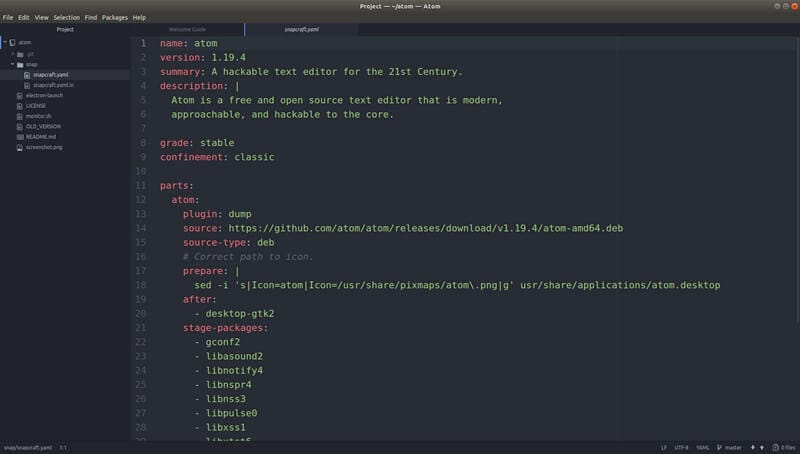

- #DOWNLOAD VIM TEXT EDITOR FOR MAC HOW TO#
- #DOWNLOAD VIM TEXT EDITOR FOR MAC SOFTWARE#
- #DOWNLOAD VIM TEXT EDITOR FOR MAC LICENSE#
In 2006, it was voted the most popular editor amongst Linux Journal readers in 2015 the Stack Overflow developer survey found it to be the third most popular text editor, and in 2019 the fifth most popular development environment. Since its release for the Amiga, cross-platform development has made it available on many other systems.
#DOWNLOAD VIM TEXT EDITOR FOR MAC LICENSE#
The Vim license is compatible with the GNU General Public License through a special clause allowing distribution of modified copies under the GNU GPL version 2.0 or later.
#DOWNLOAD VIM TEXT EDITOR FOR MAC SOFTWARE#
Vim is released under the Vim license that includes some charityware clauses, encouraging users who enjoy the software to consider donating to children in Uganda. Vim is designed for use both from a command-line interface and as a standalone application in a graphical user interface. Vim's author, Bram Moolenaar, derived Vim from a port of the Stevie editor for Amiga and released a version to the public in 1991. It is an improved clone of Bill Joy's vi. Vim ( / v ɪ m/ a contraction of Vi IMproved) is a free and open-source, screen-based text editor program for Unix.
#DOWNLOAD VIM TEXT EDITOR FOR MAC HOW TO#
You should also know how to change the color settings and find the best solution for you.ĭon’t be afraid to experiment with the color configuration.Unix, Linux, Windows NT, MS-DOS, macOS, iOS, Android, Haiku, AmigaOS, MorphOS Just add the lines to the existing configuration file, following the standard highlight syntax.Īfter reading this article, you should have some basic knowledge of Vim color schemes. When manually configuring syntax highlighting, you can add individual instructions with the highlight command. To enable the syntax highlight feature you also need to include the following line: syntax on Here, you can set the default color scheme by modifying the colorscheme line and setting the theme you prefer. To make the changes permanent, modify Vim’s configuration file with the wanted color settings.įirst, you need to open the Vim startup file, located in /etc or users home directory under the name. Once you close Vim, the color scheme returns to the default settings. Take a look at this file and its initial color scheme when opened with the Vim text editor:Ĭhanges you have made to the color settings are not permanent.


The best way to show how the highlight command works, is with a simple example. Instead, the values you use for these highlight keys include: bold, italic, underline, reverse, and none. However, cterm and gui are not used with color values. When specifying the values for ctermfg, ctermbg/ guifg, guibg, you can use standard color names, their prescribed numbers or hex values (only in the GUI). Users who prefer the GUI need to use the highlight keys:

The key=value element varies depending on whether you use a GUI or work in a terminal window.įor example, if you are working inside a terminal that has color support, you could include any of the following highlight keys: To see an extensive list of all the groups, refer to Vim’s official documentation. These are just some out of the many Vim highlight groups.


 0 kommentar(er)
0 kommentar(er)
